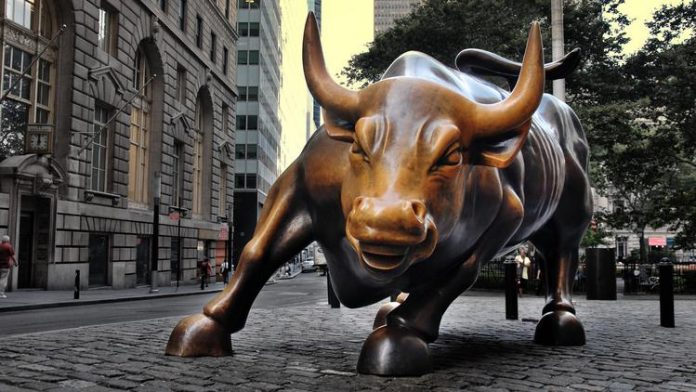Stocks fell this morning as AMD and Alphabet shares plummeted, dragging the broader tech sector down with them.
The Nasdaq Composite saw a 1.3% decrease, in contrast to the S&P 500’s 0.8% slide. Meanwhile, the Dow Jones Industrial Average remained relatively stable.
Alphabet’s shares plunged over 6%, marking their steepest decline since Oct. 25, as disappointing ad revenues took precedence over their otherwise strong earnings and sales. Microsoft and AMD also saw their stocks decline by 1.3% and 3%, respectively, following their lower-than-anticipated future guidance, despite positive quarterly results.
Despite surpassing analyst expectations, the tech sector – the main driver for the late 2023 rally – is now trading at a high valuation of nearly 29 times its 2024 earnings. For tech companies to sustain their high price-to-book ratios, major earnings growth will be necessary.
Modestly better-than-expected results simply won’t cut it. Alphabet’s pullback, in spite of its earnings beat, could also be some profit-taking with stocks at dizzying heights. Earnings will have to really accelerate from here to prevent price multiples from climbing any higher.
Traders were also bracing for the Fed’s rate decision, coming up in less than an hour. The fed funds futures market indicated a 98% chance of unchanged rates. Investors await insights from the Fed’s statement and Jerome Powell’s comments for indications of policy shifts. Several weeks ago, Fed governors pushed back strongly against the narrative of imminent cuts. Powell will have a chance to do so, too.
But the biggest shock of the day came when New York Community Bancorp’s stock crashed at the open, falling below SVB crisis lows after a shocking fourth-quarter loss and dividend cut.
The bank reduced its dividend from 17 cents to 5 cents, contrary to analysts’ predictions. An unexpected loss was driven by a higher-than-anticipated loan-loss provision as well, which amplified fears.
Thomas Cangemi, the CEO, acknowledged the dividend cut’s impact, stating, “These actions, while negatively affecting our fourth-quarter results, position us better for the future.”
The bank reported a $252 million loss for the last quarter of the previous year, against the $206 million profit forecasted by analysts. Its $886 million revenue also fell short of the nearly $932 million expectation.
Investors were startled by the scale of losses, having believed the Fed and Treasury’s assurances that the SVB incident was isolated. RBC Capital Markets analyst Jon Arfstrom noted, “Management previously claimed strong asset quality, so this marks a significant shift in their tone. This is a material negative surprise.”
Our readers might not find this so shocking, though, given our previous warnings about regional banks’ underlying balance sheet issues, especially as the Fed’s bank bailout fund nears its end.
Late last year, we highlighted concerns about regional banks’ stability without the bailout fund, suggesting large banks could acquire smaller ones from the FDIC. A conspiracy theorist might even say it’s all part of the plan – for the big banks to “gobble up” the little ones – in hopes of having an excuse to end quantitative tightening (QT) and start quantitative easing (QE) back up.
Earlier this month, Dallas Fed President Lorie Logan raised the alarm when she said that the pace of the Fed’s QT is threatening to unleash chaos on markets via the Fed’s overnight reverse repo (ON RRP) facility, where counterparties like money market mutual funds park excess cash to earn some risk-free interest. ON RRP balance levels are on track to be dangerously low within the next few months.
The last time this happened was back in 2019, and it caused the overnight repo rate to jump from 2.43% to 5.25%, hitting a peak as high as 10% at one point during the day. The amount of cash available in the financial system cratered, forcing the Fed to step in and inject emergency liquidity. Had the Fed not acted, meltdowns would have emerged in numerous markets.
That’s part of the reason why the Fed wants to end QT. Eventually, though, the Fed’s inevitably going to start QE back up again. Partially due to ON RRP concerns but also because the “nonpolitical Fed” (give me a break) wants to avoid a market crisis or recession ahead of the coming presidential election, with Jerome Powell ensuring everything proceeds as planned.
In anticipation, yields are falling, making Treasurys a hot buy once again despite a looming Powell speech that could spike yields in the event that he leans too hawkish.









